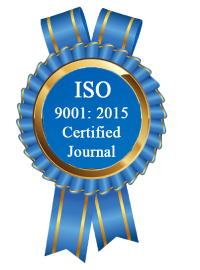| All | Since 2020 | |
| Citation | 172 | 110 |
| h-index | 7 | 5 |
| i10-index | 1 | 0 |
WJERT Citation 
Login
News & Updation
Abstract
ASSESSMENT OF FUNGAL PATHOGENS FROM INFECTED RICE AND ORANGES AND THEIR GROWTH IN ACIDIFIED MEDIA
Debasish Bhattacharya*, Sohana Najrin, Shreyosi Mukherjee, Satavisha Mullick, Shagufta Parveen and Paushali Pal
ABSTRACT
An attempt was made to isolate the fungal pathogens from rice and infected oranges. Further, the pathogens were identified based on their morphological characteristics and biochemical tests. Biochemical tests like Catalase test, Urease test, Gelatin Hydrolysis test and Carbohydrate Fermentation tests using Glucose (monosaccharide), Sucrose (disaccharide) and Lactose (disaccharide) were performed to identify the pathogens. All the test organisms were able to split the hydrogen peroxide to evolve oxygen. Hence, Catalase positive. Again, Penicillium possessed the enzyme Urease, producing ammonium carbonate, which raised the pH turning the urea agar into pinkish colour with phenol red indicator. The other two test organisms answered negative with Urease Test. Again, all the test organisms responded positively to Gelatin Liquefaction test, turning the gelatin to polypeptides and polypeptides were further hydrolysed to amino acids, marked by liquefaction of the gelatin agar medium even after refrigeration. All the test organisms responded positively with Carbohydrate Fermentation test, using glucose, producing acid and gas as a result of fermentation. Phenol Red used as indicator for Carbohydrate Fermentation tests showed that there was no acid and gas formation for lactose, except Cladosporium. Again, for sucrose fermentation reaction was observed for Alternaria and Cladosporium, but not Penicillium. Thus, the three test organisms found were Alternaria, Penicillium and Cladosporium. An interesting fact was that Acetic acid, an inhibitor of fungi, was used to culture Alternaria fungi.
[Full Text Article] [Download Certificate]
